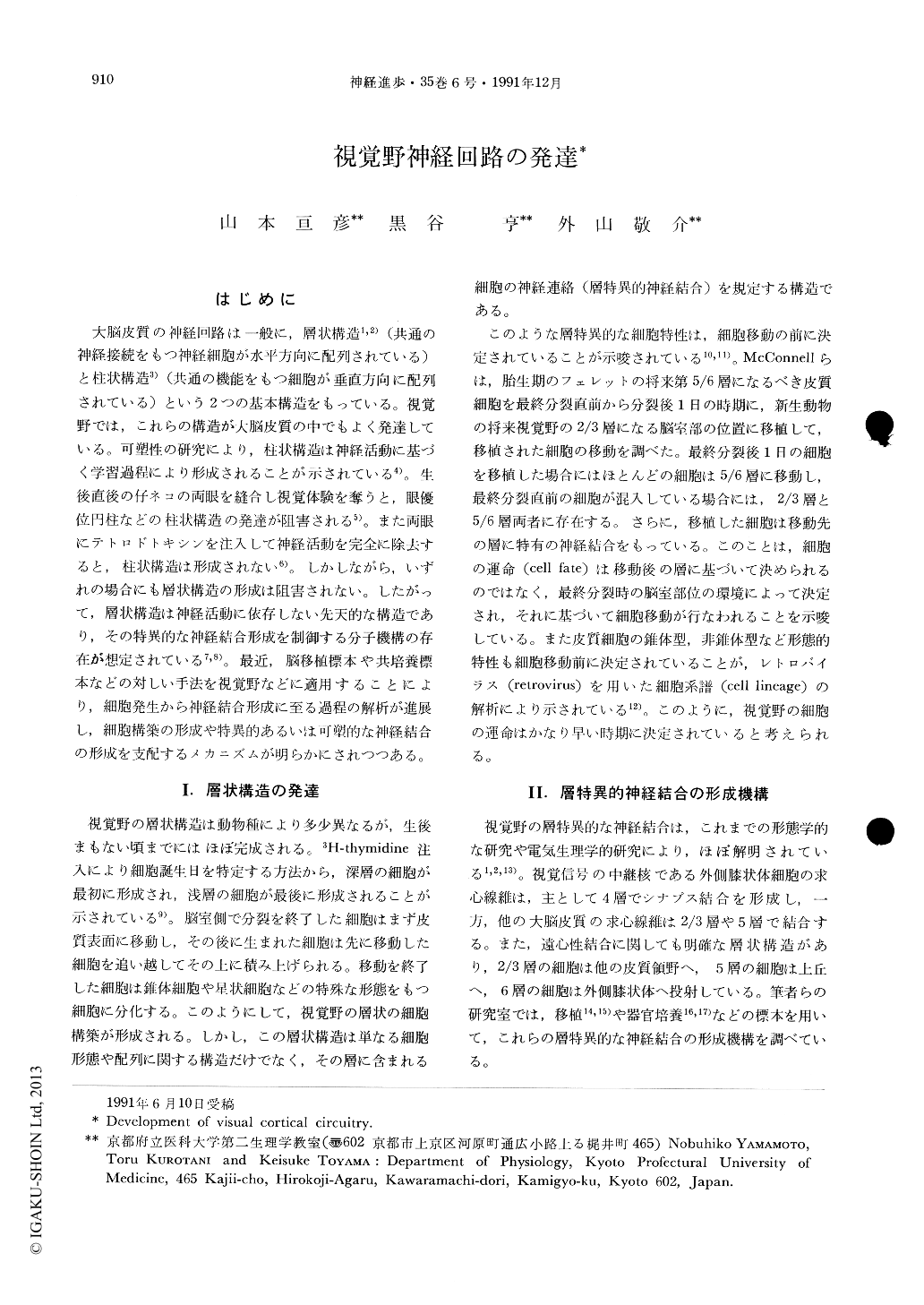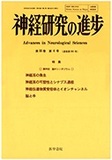Japanese
English
- 有料閲覧
- Abstract 文献概要
- 1ページ目 Look Inside
はじめに
大脳皮質の神経回路は一般に,層状構造1,2)(共通の神経接続をもつ神経細胞が水平方向に配列されている)と柱状構造3)(共通の機能をもつ細胞が垂直方向に配列されている)という2つの基本構造をもっている。視覚野では,これらの構造が大脳皮質の中でもよく発達している。可塑性の研究により,柱状構造は神経活動に基づく学習過程により形成されることが示されている4)。生後直後の仔ネコの両眼を縫合し視覚体験を奪うと,眼優位円柱などの柱状構造の発達が阻害される5)。また両眼にテトロドトキシンを注入して神経活動を完全に除去すると,柱状構造は形成されない6)。しかしながら,いずれの場合にも層状構造の形成は阻害されない。したがって,層状構造は神経活動に依存しない先天的な構造であり,その特異的な神経結合形成を制御する分子機構の存在が想定されている7,8)。最近,脳移植標本や共培養標本などの対しい手法を視覚野などに適用することにより,細胞発生から神経結合形成に至る過程の解析が進展し,細胞構築の形成や特異的あるいは可塑的な神経結合の形成を支配するメカニズムが明らかにされつつある。
Neural circuitry in the visual cortex is characerized by two basic organizations. One of them is the laminar organization determining the extrinsic and intrinsic neural connectivities of the cortical cells according to the cortical depth, and the other is the columnar structures where the cortical cells are arranged in a perpendicular way according to the response selectivities. It is known that the columnar organization is the postnatal structures dependent on the visual experience, while the laminar organization is prenatal structures unmodifiable by the visual experience.

Copyright © 1991, Igaku-Shoin Ltd. All rights reserved.


